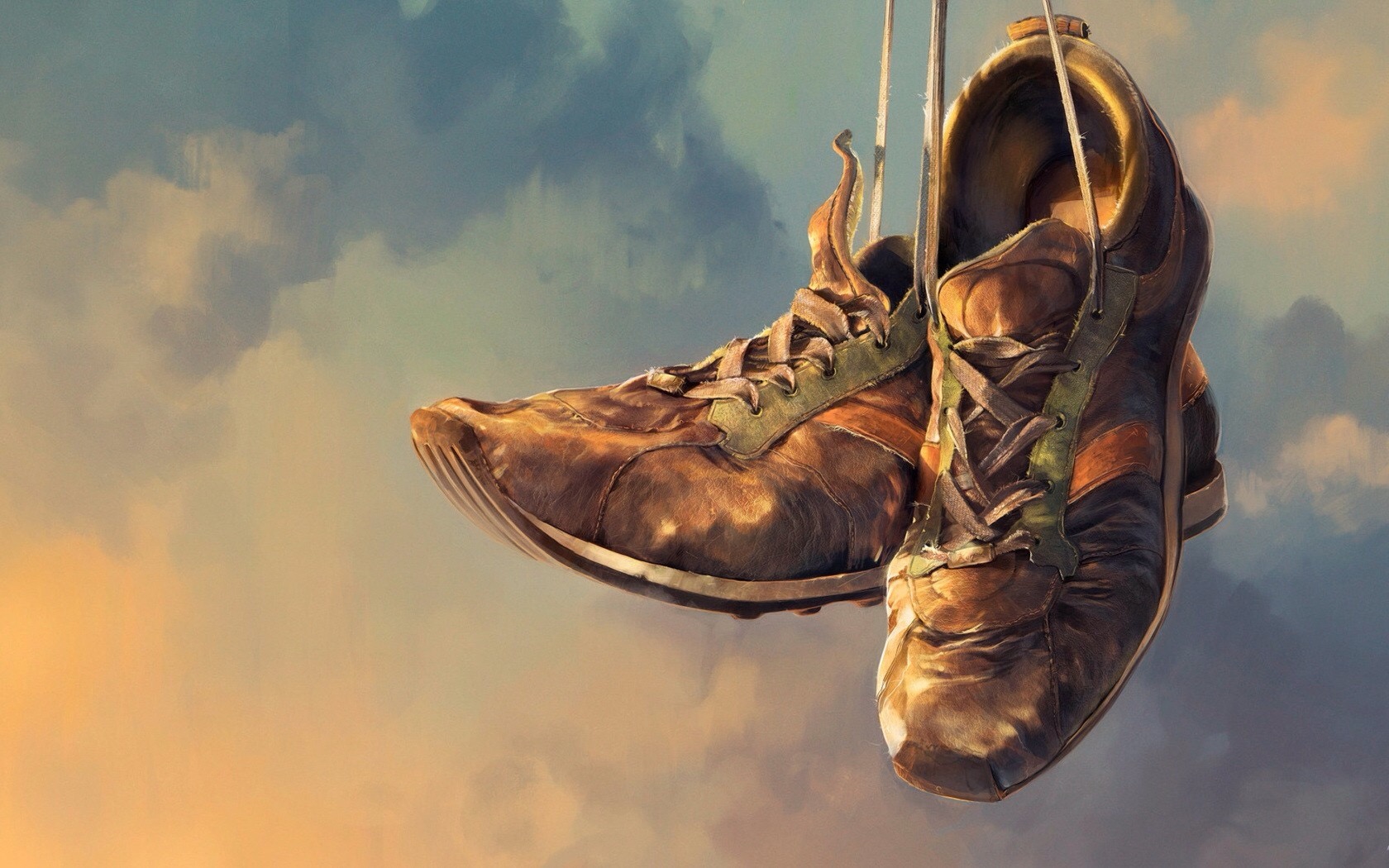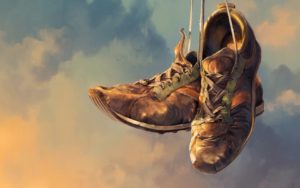 A mazel tov shout out to our close friends Judith and Shlomo Gottesman upon the wedding this past week of their beautiful daughter Talia, to Gabi Stone, Mazel tov again to Talia’s grandparents, Mrs. Blanche Lerer, and Rabbi & Mrs. Sondra Gottesman. Mazel tov to the extended Stone and Gottesman families; may Talia & Gabi be merit and be blessed with many decades of blissful marriage.
A mazel tov shout out to our close friends Judith and Shlomo Gottesman upon the wedding this past week of their beautiful daughter Talia, to Gabi Stone, Mazel tov again to Talia’s grandparents, Mrs. Blanche Lerer, and Rabbi & Mrs. Sondra Gottesman. Mazel tov to the extended Stone and Gottesman families; may Talia & Gabi be merit and be blessed with many decades of blissful marriage.
Raboyseyee and Ladies:
Forty Year Old Shoes:
Imagine for a moment that you were to go home and tell your eishes chayil (wife) that henceforth she can no longer buy new shoes. Why not? Because you came across a pair of shoes that last forty years. Moreover, they were fashioned from high quality and colorful leather. Avada one should not try this in real life: such words, were they to be uttered – even as a joke- could be detrimental to your health and zicher to your marriage! Some might argue that she would be more receptive were she to hear that you were chapping, if you chap, on the side. Ober, do such shoes exist? Did they ever? And why are we discussing shoes in a parsha which contains but one big mitzvah; to build the RBSO a Mishkan, a Sanctuary. Nu, we shall explore that below.
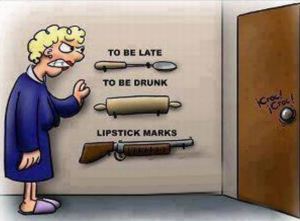 Let’s roll back to the end of parshas Boi. The Yiddin, after 210 years, or perhaps after 400, or 430 years, were set to leave Mitzrayim. At this point, Paroy was mamish chasing them out. A few million left, followed by a few million more of the Erev Rav. They had seemingly borrowed -permanently- silver, gold, and clothing from their neighbors. Sadly they had no time to bake the bread; they left in a hurry. As a result, generations later, we eat matzo yearly on Pesach (Passover) to recall their plight. Of course, we don’t blame our ancestors: given the choices, we too would likely have packed silver and gold and forgone the bread. No one carrying gold ever went hungry. The heylige Gemora (Bichoiris 5) tells us that every Jew left Mitzrayim (Egypt) with 90 Libyan donkeys, each laden with gold, silver, and other valuables. To recall this wealth, we, like real asses, spend a small fortune yearly on Pesach preparations: food, matzo, clothing, flights, hotels, and the list goes on.
Let’s roll back to the end of parshas Boi. The Yiddin, after 210 years, or perhaps after 400, or 430 years, were set to leave Mitzrayim. At this point, Paroy was mamish chasing them out. A few million left, followed by a few million more of the Erev Rav. They had seemingly borrowed -permanently- silver, gold, and clothing from their neighbors. Sadly they had no time to bake the bread; they left in a hurry. As a result, generations later, we eat matzo yearly on Pesach (Passover) to recall their plight. Of course, we don’t blame our ancestors: given the choices, we too would likely have packed silver and gold and forgone the bread. No one carrying gold ever went hungry. The heylige Gemora (Bichoiris 5) tells us that every Jew left Mitzrayim (Egypt) with 90 Libyan donkeys, each laden with gold, silver, and other valuables. To recall this wealth, we, like real asses, spend a small fortune yearly on Pesach preparations: food, matzo, clothing, flights, hotels, and the list goes on.
Two parshas later, (Yisroy), the Yiddin were married to the RBSO and received the Aseres Hadibros. Translated literally into plain English, they are the Ten Utterances. Be that as it may, they were, and remain known, as the Ten Commandments. Ober were there but ten? Most agree that ten is not the correct number; what the Yiddin heard that day was either fourteen or efsher fifteen different commandments. How did ten morph into fourteen? And, why is that relevant in this week’s parsha of Teruma where the Yiddin will be instructed in construction of a Mishkan or Mikdash, both terms seemingly used interchangeably to connote a sanctuary?
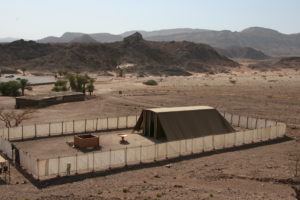 Welcome to parshas Teruma which is dedicated to but one topic: the planning, architecture, construction, and interior design of the Mishkan (Sanctuary) project. All avada chap that a construction project is complicated and requires, detailed plans, proper zoning, engineering, materials and above all, money. As our parsha opens, the Yiddin will be instructed on the materials needed for the project. In fact they will be commanded to voluntarily donate each of the materials needed. Seeking donations from the Yiddin was not at all difficult: they were, as described above quite wealthy. How wealthy? Says the Yalkut Shimoni (Devorim) that following the war with Oig, King of Basham, the Yiddin didn’t bother taking the spoils of war. They already had everything and found nothing there of any significant value.
Welcome to parshas Teruma which is dedicated to but one topic: the planning, architecture, construction, and interior design of the Mishkan (Sanctuary) project. All avada chap that a construction project is complicated and requires, detailed plans, proper zoning, engineering, materials and above all, money. As our parsha opens, the Yiddin will be instructed on the materials needed for the project. In fact they will be commanded to voluntarily donate each of the materials needed. Seeking donations from the Yiddin was not at all difficult: they were, as described above quite wealthy. How wealthy? Says the Yalkut Shimoni (Devorim) that following the war with Oig, King of Basham, the Yiddin didn’t bother taking the spoils of war. They already had everything and found nothing there of any significant value.
Nu, as it turns out, the controversy begins quite early in the parsha. In posik beis (second verse), Rashi -and who knew more or better than did he- tells us that in order to initiate, properly plan, and then construct the project, thirteen items needed to be donated and collected. Let’s call these items the materials-needed list. Let’s get some background by reading a pisukim innaveynig (the text). Says the heylige Toirah (25: 2-8), azoy.
| 2. “Speak to the children of Israel, and have them take for Me an offering; from every person whose heart inspires him to generosity, you shall take My offering. | בדַּבֵּר אֶל בְּנֵי יִשְׂרָאֵל וְיִקְחוּ לִי תְּרוּמָה מֵאֵת כָּל אִישׁ אֲשֶׁר יִדְּבֶנּוּ לִבּוֹ תִּקְחוּ אֶת תְּרוּמָתִי: | |
| 3 And this is the offering that you shall take from them: gold, silver, and copper; | גוְזֹאת הַתְּרוּמָה אֲשֶׁר תִּקְחוּ מֵאִתָּם זָהָב וָכֶסֶף וּנְחשֶׁת: | |
| 4 blue, purple, and crimson wool; linen and goat hair; | דוּתְכֵלֶת וְאַרְגָּמָן וְתוֹלַעַת שָׁנִי וְשֵׁשׁ וְעִזִּים: | |
| 5 ram skins dyed red, tachash skins, and acacia wood; | הוְעֹרֹת אֵילִם מְאָדָּמִים וְעֹרֹת תְּחָשִׁים וַעֲצֵי שִׁטִּים: | |
| 6 oil for lighting, spices for the anointing oil and for the incense; | ושֶׁמֶן לַמָּאֹר בְּשָׂמִים לְשֶׁמֶן הַמִּשְׁחָה וְלִקְטֹרֶת הַסַּמִּים: | |
| 7 shoham stones and filling stones for the ephod and for the choshen. | זאַבְנֵי שֹׁהַם וְאַבְנֵי מִלֻּאִים לָאֵפֹד וְלַחשֶׁן: | |
| 8 And they shall make Me a sanctuary and I will dwell in their midst | חוְעָשׂוּ לִי מִקְדָּשׁ וְשָׁכַנְתִּי בְּתוֹכָם: |
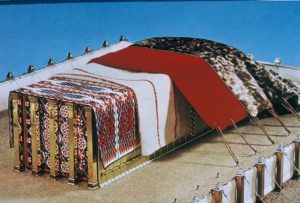 Says Rashi: “the thirteen items mentioned in this passage were all required either for the construction of the RBSO’s Dwelling, or for the Koihanims’ (Priests’) garments (as you will see when you check more carefully).” Ober along came the Kli Yokor and a few fact checkers, mistama all liberals from the NY Times and CNN, and said it’s not so! If you list each item, they total fifteen. Shoin, let’s do our own count. Gold, silver, copper, aquamarine (wool), purple (wool), scarlet (wool), linen, goats’ hair, red-dyed rams’ skins, tachash skins, pine wood, oil for the light, spices for the anointing oil and the spice incense, shoham stones and insert stones. Guess what? Taka there are fifteen. And the kasha is azoy: How did Rashi count thirteen when it’s mamish clear as day that fifteen items are delineated above?
Says Rashi: “the thirteen items mentioned in this passage were all required either for the construction of the RBSO’s Dwelling, or for the Koihanims’ (Priests’) garments (as you will see when you check more carefully).” Ober along came the Kli Yokor and a few fact checkers, mistama all liberals from the NY Times and CNN, and said it’s not so! If you list each item, they total fifteen. Shoin, let’s do our own count. Gold, silver, copper, aquamarine (wool), purple (wool), scarlet (wool), linen, goats’ hair, red-dyed rams’ skins, tachash skins, pine wood, oil for the light, spices for the anointing oil and the spice incense, shoham stones and insert stones. Guess what? Taka there are fifteen. And the kasha is azoy: How did Rashi count thirteen when it’s mamish clear as day that fifteen items are delineated above?
It’s a few parshas later and again we’re having trouble counting to fifteen; what’s taka pshat with these fuzzy numbers in our parshas? Why can’t ten mean mamish ten (as in the Commandments) and how does thirteen become fifteen? Why can’t we get the numbers straight? Do we need Price Waterhouse to do a tally and give us the envelope with the correct number? Never mind! Was Rashi efsher a shtikel buzzed from the wine in his vineyard? (Yes, Rashi was a vintner.) Nu, as mentioned above, when the numbers don’t add up, it’s time to bring in the exegetes and to let each pontificate on the reconciliation process in order that each party be correct. After all, isn’t every medrish emes? So says a chaver of the Oisvorfer who sadly suffers from arrested development, mistama due to trauma endured earlier in his life from a rogue rebbe or teacher. Let’s see what a few had to say.
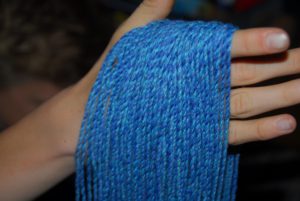 Says the Mizrachi: it’s all quite simple. The three types of wool mentioned are all but one. Where is it written that each color of wool merited its own SKU (stock keeping unit). Wool is wool; colors don’t count. Shoin, all the wools were lumped together and counted by Rashi as but one item. Shoin, mamish reconciled; Rashi was correct. Ober say the Chizkuni and the Gur Aryeh: Efsher it’s possible that each color of wool did have its own SKU. Would Wal-Mart or Amazon not assign a different stocking number to each color? Of course they would; and mistama so did Rashi. Oib azoy (if that’s the case) how did Rashi count thirteen when there are plainly fifteen? Shoin, let’s try another pshat. It’s taka emes they suggest, that fifteen items were collected from the Yiddin; case closed. Ober of those, only thirteen were collected by the masses. Rashi, we can posit, was but listing those thirteen. What’s pshat? Two items, the shoham stones, and the insert stones, were donated and given only by the Nisi’im, the local tribal leaders, at a later date. And taka we will learn (Shemois 35:27) a few parshas from now, that the Nisi’im did bring these two items. Grada their gifts came with some controversy as they were the last to donate, ober let’s not jump ahead. Ober, there too, we have a shtikel issue because but one posik later (35:28) we will learn that the tribal leaders also brought the oil for the light, the spices for the anointing oil, and the spice incense, thus leaving only eleven items which were donated by the masses. How then could Rashi insist that the Yiddin brought thirteen items?
Says the Mizrachi: it’s all quite simple. The three types of wool mentioned are all but one. Where is it written that each color of wool merited its own SKU (stock keeping unit). Wool is wool; colors don’t count. Shoin, all the wools were lumped together and counted by Rashi as but one item. Shoin, mamish reconciled; Rashi was correct. Ober say the Chizkuni and the Gur Aryeh: Efsher it’s possible that each color of wool did have its own SKU. Would Wal-Mart or Amazon not assign a different stocking number to each color? Of course they would; and mistama so did Rashi. Oib azoy (if that’s the case) how did Rashi count thirteen when there are plainly fifteen? Shoin, let’s try another pshat. It’s taka emes they suggest, that fifteen items were collected from the Yiddin; case closed. Ober of those, only thirteen were collected by the masses. Rashi, we can posit, was but listing those thirteen. What’s pshat? Two items, the shoham stones, and the insert stones, were donated and given only by the Nisi’im, the local tribal leaders, at a later date. And taka we will learn (Shemois 35:27) a few parshas from now, that the Nisi’im did bring these two items. Grada their gifts came with some controversy as they were the last to donate, ober let’s not jump ahead. Ober, there too, we have a shtikel issue because but one posik later (35:28) we will learn that the tribal leaders also brought the oil for the light, the spices for the anointing oil, and the spice incense, thus leaving only eleven items which were donated by the masses. How then could Rashi insist that the Yiddin brought thirteen items?
Not to worry: no one is wrong and zicher not Rashi. How is that possible? Says the Be’er Basodeh quoting yet another medrish azoy: the two items not included in the count (of thirteen) were taka the oil and the spices. Why? Because these two items were not used for the ‘actual construction’ of the Mikdash. They were used only once it was built. Oib azoy, how taka did Rashi come up with thirteen instead of eleven? Nu, avada we should know by now never to question Rashi. When Rashi stated ‘thirteen items’, he did not state ‘the thirteen items.’ He merely stated thirteen items. And what he meant was based on another medrish (Tanchuma 5) which tells us that the thirteen items donated by the Yiddin to the Mishkan project were a ‘repayment’ by them to the RBSO for the thirteen different items given, gifted, or found. Given by whom? Found where? Shoin: These items were the spoils of the hapless Mitzrim (Egyptians) who gave chase and subsequently drowned in the Reed Sea. They were now all dead. These thirteen items were spit up by the sea (instead off sinking to its bottom). And we know these thirteen items were found at sea from whom and from where? Nu, mamish so gishmak, says the Novee Yichezkel (Ezekiel 16:10-14) azoy:
| 10 I clothed you in embroidered garments, I shod you in tachash leather, I bound you with linen, I covered you with silk. | יוָאַלְבִּשֵׁךְ רִקְמָה וָאֶנְעֲלֵךְ תָּחַשׁ וָאֶחְבְּשֵׁךְ בַּשֵּׁשׁ וַאֲכַסֵּךְ מֶשִׁי: | |
| 11 And I adorned you with ornaments, and I put bracelets on your hands and a necklace on your neck. | יאוָאֶעְדֵּךְ עֶדִי וָאֶתְּנָה צְמִידִים עַל יָדַיִךְ וְרָבִיד עַל גְּרוֹנֵךְ: | |
| 12 And I put a nose ring on your nose and earrings on your ears, and a crown of glory on your head. | יבוָאֶתֵּן נֶזֶם עַל אַפֵּךְ וַעֲגִילִים עַל אָזְנָיִךְ וַעֲטֶרֶת תִּפְאֶרֶת בְּרֹאשֵׁךְ: | |
| 13 And you adorned yourself with gold and silver, and your raiment was fine linen and silk and embroidered cloth; fine flour, honey, and oil you ate, and you became exceedingly beautiful and you became fit for the throne. | יגוַתַּעְדִּי זָהָב וָכֶסֶף וּמַלְבּוּשֵׁךְ שֵׁשׁ (כתיב שֵׁשׁי)וָמֶשִׁי וְרִקְמָה סֹלֶת וּדְבַשׁ וָשֶׁמֶן אָכָלְתְּ (כתיב אָכָלְתְּי) וַתִּיפִי בִּמְאֹד מְאֹד וַתִּצְלְחִי לִמְלוּכָה: | |
| 14 Then your name went out among the nations for your beauty, for it is all-inclusive, with My majesty that I placed upon you, says the Lord God. | ידוַיֵּצֵא לָךְ שֵׁם בַּגּוֹיִם בְּיָפְיֵךְ כִּי | כָּלִיל הוּא בַּהֲדָרִי אֲשֶׁר שַׂמְתִּי עָלַיִךְ נְאֻם אֲדֹנָי יֱהֹוִה: |
Shoin, it’s all reconciled. The bottom line: numbers are fungible.
Let’s take a look at the item known as the tachash skins. What the hec was a tachash? Let’s find out. Says the heylige Gemora (Shabbis 28a), azoy: According to one opinion, the tachash was a kosher animal. How so? It’s poshit. Had it been a non-kosher animal, it and its parts would have been eliminated from suitability for the Mishkan project. Would the RBSO have requested, or allowed the skin of a non-kosher animal to be used in His Sanctuary? Of course not! Shoin. Ober, not so fast. Asks the medrish azoy: if the tachash was davka a kosher animal, why is it not listed among other kosher animals which are specifically delineated in Devorim (14:4-5)? Says the heylige Toirah with great specificity: these ten animals are considered kosher. They are:
| 4 These are the animals that you may eat: ox, lamb, and kid, | דזֹאת הַבְּהֵמָה אֲשֶׁר תֹּאכֵלוּ שׁוֹר שֵׂה כְשָׂבִים וְשֵׂה עִזִּים: | |
| 5 gazelle, deer, and antelope, ibex, chamois, bison, and giraffe. | האַיָּל וּצְבִי וְיַחְמוּר וְאַקּוֹ וְדִישֹׁן וּתְאוֹ וָזָמֶר: |
 Do you see the tachash on the list? Neither does the Oisvorfer! Veyter. Taka an excellent question. Shoin, answers the medrish azoy: the tachash was indeed a kosher animal, ober it existed only for a short period of time in our glorious history. When? It was created by the RBSO for a very specific purpose and was around only during the construction of the Mikdash period (seemingly less than one year) and then went extinct. Fartig and ois tachash. Therefore, it’s not included in the kosher animal list found in Devorim 14:4-5. Gishmak.
Do you see the tachash on the list? Neither does the Oisvorfer! Veyter. Taka an excellent question. Shoin, answers the medrish azoy: the tachash was indeed a kosher animal, ober it existed only for a short period of time in our glorious history. When? It was created by the RBSO for a very specific purpose and was around only during the construction of the Mikdash period (seemingly less than one year) and then went extinct. Fartig and ois tachash. Therefore, it’s not included in the kosher animal list found in Devorim 14:4-5. Gishmak.
How many of the tachash animals were there during that time? And how were the tachash skins used? Many or one? That depends on which pshat talks to you. According to some, the RBSO created but one such unique animal whose multi-colored hide was needed as one of the roof coverings of the Mishkan. The tachash they tell us had a single horn in the middle of its forehead: think unicorn. Avada, it would have been good to have Yoisef’s multi-colored tunic, alas, his brothers had cut it up, dipped it in blood and rendered it unusable. On the other hand, it’s avada also quite logical that there were many of the tachash. Why? Because the heylige Toirah tells us that each sheet of the covering needed to be thirty cubits long and four cubits wide. That’s quite a bit of covering and mistama very challenging to make that large a sheet from but one tachash hide. But wait: stop the presses! Let’s skip ahead to parshas Re’ay and see what Moishe had to say about shoes the Yiddin were donning for forty straight years. Says the heylige Toirah (Devorim 29:4), azoy:
| 4 I led you through the desert for forty years [during which time] your garments did not wear out from upon you, nor did your shoes wear out from upon your feet. | דוָאוֹלֵךְ אֶתְכֶם אַרְבָּעִים שָׁנָה בַּמִּדְבָּר לֹא בָלוּ שַׂלְמֹתֵיכֶם מֵעֲלֵיכֶם וְנַעַלְךָ לֹא בָלְתָה מֵעַל רַגְלֶךָ: |
Ober what is the connection between what Moishe told the Yiddin about their shoes not wearing out, to our parsha? Mamish a givaldige question until we again turn to the Novee Yichezkel (Ezekiel) whom the Oisvorfer never really delved into before. And while reading what he had to say about the spoils of Mitzrayim, guess what? He spoke also about the tachash. Said he in posik 10, azoy:
| 10 I clothed you in embroidered garments, I shod you in tachash leather, I bound you with linen, I covered you with silk. | יוָאַלְבִּשֵׁךְ רִקְמָה וָאֶנְעֲלֵךְ תָּחַשׁ וָאֶחְבְּשֵׁךְ בַּשֵּׁשׁ וַאֲכַסֵּךְ מֶשִׁי: |
Moreover, if Moishe’s statement in Devorim 29:4 about the Yiddin’s shoes never wearing out was correct -and who would argue with Moishe’s words- and if in fact the Novee Yichezkel was correct – and who would argue with the Novee- when he told us that the RBSO shod the Yiddin in tachash leather, we need to assume that there were herds of them. What happened to the tachash, ver veyst? On the other hand….was the RBSO not capable of using but one tachash to cover the Mishkan and then have enough left over to fashion millions and millions of shoes for the men, women, children and of course the Erev Rav? Of course He was! He can do anything and always has! Hec, He made shoes that lasted forty years. Can you imagine how much money you could slice off your budgets were your significant others to wear their tachash fashioned leather shoes for forty years?
Ober, who says the shoes Moishe was talking about were related to the tachash leather found in our parsha? Nu, let’s find out. Says the Mitzudas Dovid: I, (meaning the RBSO) placed your feet in shoes made of ‘tachash leather’, and says the Mitzudas Tzion, the tachash being referred to by the Novee, was the name of an animal that is found back in our parsha. Shoin: proof positive. The tachash gave us a Mishkan covering and millions and millions of pairs of shoes.
In other words: all the Yiddin, millions of them, and let’s not forget the Erev Rav, benefited from the tachash. How so? Avada you recall that the Yiddin were traversing the midbar. How long? Forty years. And during their entire midbar sojourn, they of course did plenty of walking. Were they wearing Timberland’s or a better brand, efsher designer hiking boots? No! They all wore shoes. Shoes? Yes indeed: shoes fashioned out of tachash skins. Nu, to fashion a covering which was 30 cubits in size and to then have enough hides left over to then fashion shoes for millions and men, women and children, mistama the RBSO created many.
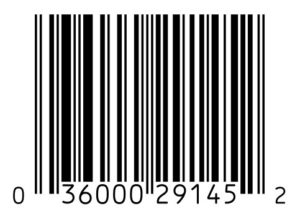 Ober says the Mizrachi maybe it’s not so. Efsher there were two tachash animals. One was kosher and one not. The kosher tachash was taka around only during the design, planning and building of the Mishkan project. Once used as commanded, it disappeared without a trace. Ober the non-kosher tachash was around, and from its non-kosher hide, the Yiddin fashioned shoes. How can that be? Ver veyst? It’s medrish; who says you need to understand how one animal with the same name was kosher and not? Did both have the same SKU?
Ober says the Mizrachi maybe it’s not so. Efsher there were two tachash animals. One was kosher and one not. The kosher tachash was taka around only during the design, planning and building of the Mishkan project. Once used as commanded, it disappeared without a trace. Ober the non-kosher tachash was around, and from its non-kosher hide, the Yiddin fashioned shoes. How can that be? Ver veyst? It’s medrish; who says you need to understand how one animal with the same name was kosher and not? Did both have the same SKU?
Nu, whether the tachash was kosher or not, we don’t know for sure. What it was, or is, we also don’t know with certainty. We can seemingly all agree that its skin made for fine long-lasting leather from which shoes for millions of people were taka fashioned.
And what can we learn from this multi-colored covering that was created by the RBSO for a specific purpose? Who knows? Ober the Oisvorfer was klerring azoy: Efsher the RBSO taka wanted this animal davka because it’s multi colors represented a tapestry, a mosaic of colors representing the different people that made up and continue to make up the Yiddin ad hayoim hazeh. Even back then, among so many Yiddin and the Erev Rav, it’s likely the case – it’s zicher the case- that they didn’t all see eye to eye. More likely, that a few wanted to poke out the eyes of others. Not everyone agreed on how to serve the RBSO. Zicher they argued over the proper interpretation of some of the laws and mitzvis already taught. Certainly, a few were pissed off when they found at Har Seenai that familiar relationships, among many others, were suddenly verboten. In fact, so says many a medrish. What to do? Shoin, the RBSO chapped that what He had was a rainbow, a tapestry of Yiddin, each with their own beliefs on how to best connect with Him. The RBSO chapped that each person serves Him in his own unique way. Efsher the lesson of the tachash is that we must, despite our differences, learn to accept one another and get along. Will it happen? Never: that lesson too went out with the disappearance of the tachash. That idea too is long extinct. The RBSO also sadly accepted that unity among Yiddin is but something to strive for and never to be achieved. The bottom line: the Mishkan is gone and so are its later iterations.
Ober asks the medrish if it’s taka emes that only the kosher tachash was used for the project because non-kosher animals were davka excluded, and taka that would make perfect sense, how was it that the Yiddin were instructed to also use -as one of the donated items- the ‘toila’as shoni’ (red or scarlet dyed wool) when avada it’s bavust (everyone knows) that the ‘toila’as-shoni which is a dyed wool and which was used, both in the Mishkan (Dwelling) and for the Koihen designer clothing line, came from a worm? And isn’t it a fact that worms, all of them, are not kosher How could the Yiddin have used it’s dye? Nu, stop asking klutz kashas (stupid questions). The RBSO ordered its use, and if He did, mistama there was a heter (permission granted) by the local Vaad for its use. Ober how so? Who gave a hechsher on this worm? Nu, let’s explore that further. The Be’er Haitev gives us three options to ruminate over. 1- pshat could be that the red dye did not come from the worm itself; instead, it came but from its cocoon. It’s taka emes that the worm may not be kosher, ober what’s wrong with its cocoon? Nothing! The cocoon was kosher. 2- The rule that non-kosher animals, or worms, cannot be used for the Mishkan project, applies davka to the animal or the worm itself, ober not to any dye. Again we agree: the worm was taka not kosher, ober it’s dye, seemingly kosher! Or, let’s explore a third option, this one a shtikel more creative. Who says the toila’as shoni was a worm? Did the RBSO tell us that? No! He just said to get some.
According to this pshat, the toila’as shoni was a plant. A plant? Ok, it was a plant that efsher looked like a worm. Shoin. How does a plant look like a worm? Says the medrish that the toila’as shoni plant takes on a wormlike appearance when not fully cooked (a phenomenon which he himself, the Be’er Heitev, witnessed. Shoin go argue). One thing is now clear as day: excellent trial attorneys each of these exegetes would have made and mistama it’s no wonder that generations later, so many Yiddin, especially after learning the heylige Gemora and medrish, have chosen law as a profession. Givaldig!
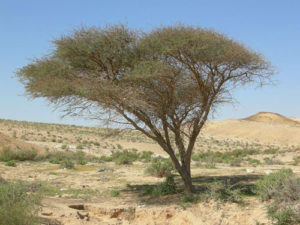 Shoin, let’s now quickly take a look at one more item on the materials needed list, the Atzai Shitim, the Acacia Wood. What about them? Was that wood also spit up by the sea along with other valuables? Did the pursuing Mitzrim load their chariots with acacia wood? Mistama not. And if not, why according to Rashi and efsher others, is it included in the list of thirteen items the Yiddin had found and were but returning to the RBSO? Taka an excellent kasha, or so it would appear. Ober, the answer is that Shitim Wood was not being carried on the chariots of the Mitzrim while giving chase. Their chariots were laden with gold, silver, and other valuables. We have to assume that Paroy’s chariot was also wood free. In any event, his mind was elsewhere occupied.
Shoin, let’s now quickly take a look at one more item on the materials needed list, the Atzai Shitim, the Acacia Wood. What about them? Was that wood also spit up by the sea along with other valuables? Did the pursuing Mitzrim load their chariots with acacia wood? Mistama not. And if not, why according to Rashi and efsher others, is it included in the list of thirteen items the Yiddin had found and were but returning to the RBSO? Taka an excellent kasha, or so it would appear. Ober, the answer is that Shitim Wood was not being carried on the chariots of the Mitzrim while giving chase. Their chariots were laden with gold, silver, and other valuables. We have to assume that Paroy’s chariot was also wood free. In any event, his mind was elsewhere occupied.
Ober how and where did the Yiddin find shitim wood over in the midbar? Were there trees in the midbar of any variety? Shoin this question was also on the mind of many that were learning these words. What to do? Put forward a pshat that makes some sense and roll with it. Says Rashi quoting and deferring to the medrish (Tanchuma 9) azoy: Our zeyda Yaakov Ovenu (Jacob) foresaw through ‘ruach hakoidesh’ (divine inspiration) that in the future, hundreds of years later, the Yiddin would be called upon and given the opportunity to build a Dwelling to house the RBSO’s Essence. And while inspired, he foresaw a vision of wood. Nu, many see wood in their dreams, if you chap. Some even get some. What kind of wood? Shitim wood. What to do? On his way to Mitzrayim to reunite with his long lost son Yoisef, he brought along tree-seeds which he planted in Mitzrayim. Shoin, before his passing, he instructed his kinderlach, each an upstanding citizen to chop down the now fully grown trees and to transport them as they left Mitzrayim. Nice pshat!
Ober asks the Ibn Ezra azoy: if it’s taka emes that these trees were previously designated and on the materials needed list that he saw with divine inspiration, why was Shitim Wood then on the list of items the Yiddin were to bring from their free-will as donations? Based on Yaakov’s dream (that’s when our forefathers saw visions and received communications from the RBSO), these shittim trees, were already designated as holy and no longer private property though the many that schlepped them across the Yam Suf may have thought otherwise. Not to worry: says the Maharal so gishmak azoy: it’s not an issue; we can easily reconcile Yaakov’s dream which made the trees holy, and the free will donations. How? Says he azoy: although the trees were taka designated and earmarked to be used in the Mishkan project, nonetheless, they remained unsanctified until the RBSO so ordered that they be included for this specific purpose. Until then they remained but private property of those Yiddin who schlepped them along.
Or, let’s try this pshat. Says the Mirzrachi azoy: it’s taka emes that Yaakov had a dream, saw a vision and knew that the trees would be needed for the project. And it’s taka emes that the Yiddin cut them down and transported them. Ober, what they carried was stam cut trees, the raw material. The trees needed to be formed into cut lumber, and only then could they be donated and sanctified. Therefore, this item was added to the list of times donated out of their free will and Rashi was correct to count the shittim trees in his list of thirteen donated items which is avada fifteen. Mamish so gishmak. The bottom line: dreaming of wood is good. Knowing what to do with the wood, once up, if you chap, is priceless.
A gittin Shabbis –
Yitz Grossman
The Oisvorfer Ruv
